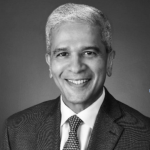The competitive drive toward digital innovation is palpable across all industries, and financial services is no exception. But even the most well-planned transformation will run up against expected and unexpected challenges. Here are three I've encountered at SunTrust bank:
Anticipating client needs and preferences: A big omnipresent challenge is trying to guess where your clients are going. We certainly see the trend of more clients using mobile platforms, but there are a lot of customers who still want to pick up the phone and have their issues answered by a real person. Because of the weight of financial decisions in a customer's life, there will always remain the need for eye-to-eye contact and for a wealth advisor to be on call for help, advice, or feedback. And so determining where your client is going to be and where you need to focus your investments can feel like a guessing game. The challenge is making the right investments in the right technology at the right time, while maintaining an innovative approach to meeting and anticipating needs as they change.
Keeping pace with technology: As capability needs evolve in response to changing client preferences, another major challenge presents itself – and that is the evolution of legacy platforms needed to build new digital capabilities. The pace of technology change is also a factor. Just when you complete a major legacy upgrade or migration, it seems there is a new version or a new technology demanding further change. We are facing this challenge at the moment as we migrate our infrastructure to the cloud, while we still have many applications running on the mainframe.
Finding the right talent: The third major challenge is finding the talent who can bring those two things together – an understanding of evolving customer needs as well as the technical prowess to build the innovative capabilities that are relevant and much needed in the financial services industry. We have a lot of individuals in this field who are used to driving technology solutions based on the old way of working and thinking. What we really need are people who can perform well at the intersection of business knowledge and product capabilities, and when we get them closely integrated with the business strategy, product, and operations leaders, they figure out the right solutions.
Raising the bar on performance and potential
At SunTrust, we've outlined a strategy to address our talent needs and grow an IT team that can truly partner with the business. It all begins with the criteria for hiring. Individuals who seek a stable and “maintain-only” platform tend to underperform, so we look for “builders.” The rapid pace of change, competitive and market demands, and the evolving regulatory environment requires us all to build – and to build fast – so this characteristic is essential.
That said, we will often find the right raw talent and then make a conscious effort to raise the bar on both performance and potential in order to fill gaps. It’s amazing how well teammates can perform if you unshackle them and provide them the ability to collaborate and innovate.
For example, we have launched several internal programs that have been highly successful, like our “Innovation Fridays.” These are facilitated sessions where 30-50 teammates from across the bank focus on creating new critical process solutions. On the training front, my key leaders and I will regularly spend an hour with the technology team on a collaboration site answering real-time questions from the team.
We also look externally to our key strategic partners when there are talent needs that we don't have in house. We recognize that we don’t always have all the answers, and so we leverage trusted third parties – be they product suppliers, consulting organizations, outsourcers, etc. – to collaborate and figure it out.
We discuss talent frequently and diligently monitor performance across IT on a monthly basis. By raising the bar on performance and making it more aligned to the business, we've been able to minimize our talent challenges while continuously improving of our technology teams’ performance and reputation within the organization.






